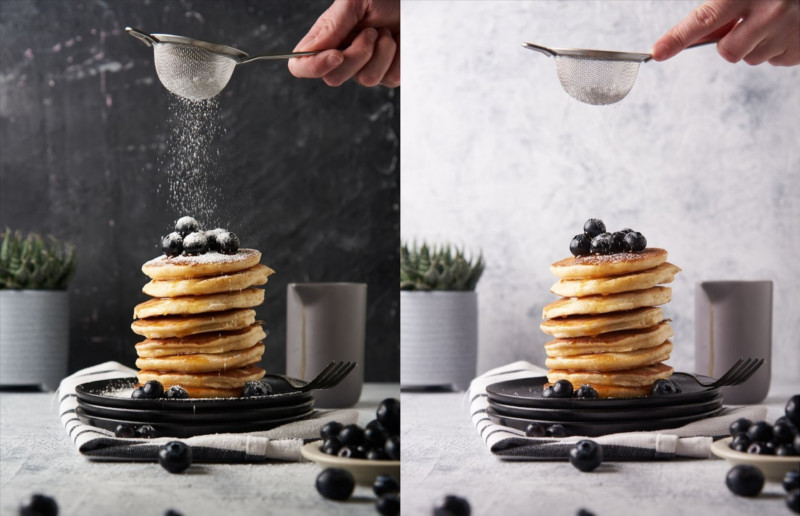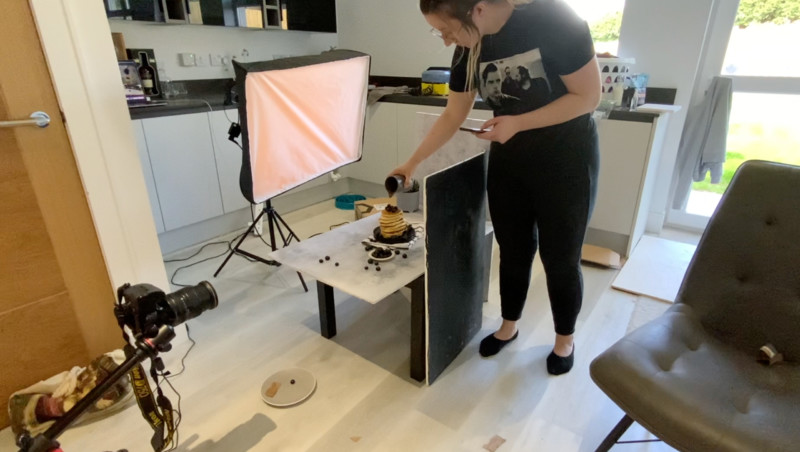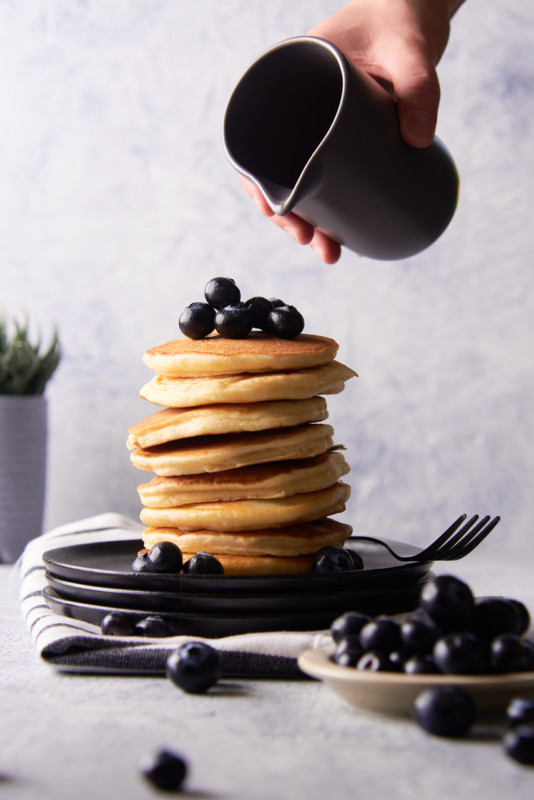If you follow the food photography community on Instagram, I am sure you will have seen some lovely, dreamy images with syrup or chocolate being poured over some equally lovely-looking food. If you’re not sure how to make these kinds of photos, I’m here to help.
“Pour shots” are a great way to add some interest to food photography by creating action and adding a human element. If you have been wondering how you can create these types of images, or wondering how to improve your own I have put together some great tips for you.
Does it Pour?
My first tip would be to check what are you pouring out of pours nicely. Some jugs have a nice lip which helps them pour out liquid smoothly — other jugs or cups may trickle down instead of pouring out smoothly. I recommend that you double-check how your chosen vessel pours liquids before the shoot because you don’t want to have a whole shoot set up only to find that you’re ready to pour, your jug isn’t great at the task and has made a mess of your whole scene. This problem is more common with liquids with a more runny consistency.

Get the Right Consistency
More viscous liquids — like melted chocolate — can be a bit too thick to pour. In this case, you can add a little hot water to loosen it, which can help it pour or drip smoother. On the other end of the scale, if you want to thicken a liquid you can add a mixture of corn starch and water to thicken it up.
Choose Backgrounds Wisely
When picking your background color or tone, make sure you have in mind what you are going to be pouring or sprinkling — we don’t want it to blend into the background making it difficult to see. It’s best to pick a background that really helps it stand out. For example, if you use a white background and sprinkle on some white icing sugar, the icing sugar is going to be hard to notice. Do the same on a black background and it is going to really stand out.

Stand in the Right Location

This might sound really obvious, but we need to know where we are going to stand when actually performing the pour. You would be surprised how easy it is to forget this step. We don’t want to be blocking the light, casting a shadow, or obstructing the subject. I recommend placing yourself in a position, perform a “fake pour,” and take the photo so that you can see if your position or the lighting needs to be adjusted.

Check out my video above for more tips or to see some behind the scenes of these tips in action. For more videos all about food photography, check out my YouTube Channel.
About the author: Amie Prescott is a professional photographer, and food photography combines two of her favorite things: food and photography. Prescott put a good spin on lockdown by using the bad situation to create YouTube videos in an effort to help people looking to learn food photography.